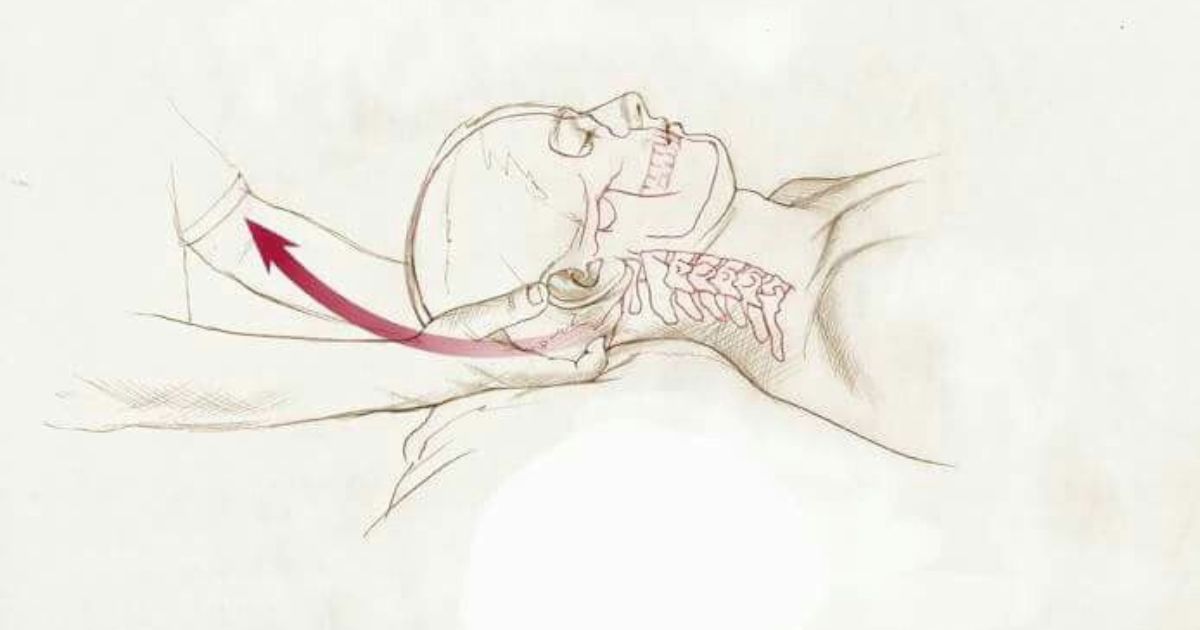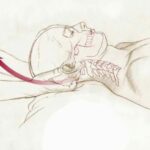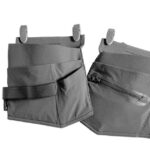In the ever-evolving world of chiropractic care, practitioners continually seek methods that are both effective and gentle for their patients. One such approach that has gained recognition over the decades is the Sacro Occipital Technique (SOT). Developed in the 1920s by Dr. Major Bertrand DeJarnette, SOT is a unique, holistic chiropractic method that focuses on the relationship between the sacrum (the triangular bone at the base of the spine) and the occiput (the back of the skull). This technique emphasizes the body’s innate ability to heal itself by restoring proper alignment and function to the craniosacral system and the entire spine.
Unlike more forceful adjustment styles, the Sacro Occipital Technique uses minimal force, making it suitable for people of all ages—from infants to seniors. It integrates principles from osteopathy, craniosacral therapy, and traditional chiropractic philosophy, offering a comprehensive approach to wellness that goes beyond just relieving back pain. In this article, we’ll explore the origins, principles, diagnostic methods, treatment protocols, benefits, and scientific support behind SOT, helping you understand why it remains a respected and widely used chiropractic technique today.
Table of Contents
The Origins and Development of Sacro Occipital Technique
The Sacro Occipital Technique was pioneered by Dr. Major Bertrand DeJarnette, an American chiropractor and engineer, in the 1920s. Trained in both chiropractic and osteopathy, Dr. DeJarnette was deeply interested in the biomechanics of the human body and the role of the nervous system in overall health. His engineering background gave him a unique perspective—he approached the spine not just as a collection of bones and joints, but as a dynamic, interconnected system governed by precise mechanical and neurological principles.
Over the course of more than 50 years, Dr. DeJarnette refined SOT through extensive clinical observation, research, and patient feedback. He developed a system that combined gentle adjustments with specific indicators to determine where and when treatment was needed. His work was heavily influenced by the cranial osteopathy teachings of Dr. William Sutherland, who proposed that the bones of the skull have subtle movements that affect cerebrospinal fluid flow and nervous system function.
Dr. DeJarnette believed that misalignments in the sacrum could disrupt the flow of cerebrospinal fluid and interfere with communication between the brain and the rest of the body. By correcting these misalignments—and addressing related imbalances in the cranial bones and spine—he theorized that the body could restore its natural healing capacity. Today, the Sacro Occipital Technique is taught in chiropractic colleges worldwide and practiced by thousands of certified chiropractors who continue to honor Dr. DeJarnette’s legacy through ongoing education and clinical application.
Core Principles of the Sacro Occipital Technique
At the heart of the Sacro Occipital Technique are three foundational principles that guide diagnosis and treatment:
1. The Triad of Health
SOT views health through a “triad” consisting of structural, chemical, and mental/emotional components. True wellness, according to this model, requires balance among all three. Structural imbalances—such as misalignments in the spine or pelvis—can affect nerve function, which in turn influences chemical processes (like hormone regulation) and emotional well-being. SOT practitioners aim to restore structural integrity as a first step toward rebalancing the entire triad.
2. The Craniosacral System
SOT places special emphasis on the relationship between the sacrum and the occiput, which are connected via the dura mater—a tough membrane that surrounds the brain and spinal cord and contains cerebrospinal fluid (CSF). This connection forms what is known as the craniosacral system. According to SOT theory, proper motion between the sacrum and occiput ensures healthy CSF circulation, which nourishes the central nervous system and supports optimal brain function.
3. The Body’s Self-Correcting Mechanisms
Rather than imposing external corrections, SOT works with the body’s innate intelligence. Practitioners use gentle, precise adjustments that encourage the body to “self-correct” misalignments. This patient-centered approach respects the body’s natural healing rhythms and avoids aggressive manipulation.
These principles make the Sacro Occipital Technique not just a method for treating pain, but a holistic system for promoting long-term health and resilience.
Expand your knowledge and check out more posts on our blog!
How SOT Diagnosis Works: Indicators and Categories
One of the most distinctive features of the Sacro Occipital Technique is its use of “indicators”—specific, observable signs that help the practitioner determine where dysfunction exists and whether an adjustment is needed. These indicators are highly sensitive and allow for precise, individualized care.
Primary Indicators
The main diagnostic tools in SOT include:
- Pelvic Palpation: The chiropractor checks for tenderness or asymmetry in specific ligaments around the pelvis, particularly the sacrotuberous ligaments. Tenderness on one side often indicates a sacral torsion or pelvic imbalance.
- Cranial Indicators: Light pressure on certain points on the head can reveal restrictions in cranial bone movement.
- Extremity Indicators: Changes in leg length (functional, not structural) are often used to assess pelvic alignment and nervous system stress.
The Three SOT Categories
SOT classifies patient presentations into three primary “categories,” each representing a different type of biomechanical or neurological dysfunction:
- Category I: Involves instability of the sacroiliac (SI) joint due to ligament weakness. Patients may experience low back pain, sciatica, or pelvic discomfort. Treatment focuses on stabilizing the SI joint using specific pelvic blocking techniques.
- Category II: Characterized by a torsion or twist in the sacrum, often causing asymmetrical weight-bearing and muscle imbalances. Adjustments aim to release the torsion and restore symmetrical pelvic motion.
- Category III: Involves disc-related issues, such as bulging or herniated discs, which can compress nerves and cause radiating pain. SOT uses decompression techniques to relieve pressure on the disc and promote healing.
In addition to these, SOT also includes protocols for cranial work, extremity adjustments, and organ reflex techniques—making it a truly comprehensive system.
The SOT Adjustment Process: Gentle, Precise, and Effective
What sets the Sacro Occipital Technique apart from many other chiropractic methods is its gentleness. Instead of high-velocity thrusts, SOT uses low-force adjustments that are often barely perceptible to the patient. Here’s what a typical SOT session might involve:
Pelvic Blocking
One of the hallmark techniques of SOT is the use of wedge-shaped blocks (usually made of foam or wood) placed under the pelvis while the patient lies face down. The patient’s own breathing and body weight create subtle oscillations that help realign the sacrum and normalize pelvic function. This method is especially effective for Category I and II conditions.
Cranial Adjustments
Using very light fingertip pressure, the chiropractor may gently encourage movement in the cranial bones to improve cerebrospinal fluid flow. These adjustments are so gentle that many patients fall asleep during treatment.
Drop-Table Adjustments
Some SOT practitioners use specialized chiropractic tables with drop pieces that move slightly during an adjustment, reducing the amount of force needed. This enhances comfort while maintaining effectiveness.
Organ Reflex Work
SOT also recognizes connections between spinal segments and internal organs (via the autonomic nervous system). Gentle pressure on specific points along the spine may support organ function—such as digestion or respiration—by reducing nerve interference.
Throughout the session, the practitioner continuously checks indicators to ensure the body is responding appropriately. Adjustments are only performed when the body “asks” for them, making SOT a responsive and respectful form of care.
Conditions Commonly Treated with SOT
While the Sacro Occipital Technique is often sought for back and neck pain, its applications extend far beyond musculoskeletal complaints. Because SOT addresses the nervous system as a whole, it can support a wide range of health concerns, including:
- Low back pain and sciatica
- Neck pain and headaches (including migraines)
- Temporomandibular joint (TMJ) disorders
- Vertigo and balance issues
- Digestive problems (such as constipation or irritable bowel syndrome)
- Menstrual irregularities and pelvic pain
- Post-concussion symptoms
- Infant colic, nursing difficulties, and sleep issues
- Stress, anxiety, and fatigue
Many patients report improvements not only in their primary complaint but also in overall energy, sleep quality, and immune function after beginning SOT care. This systemic effect underscores SOT’s holistic philosophy.
Safety and Suitability: Who Can Benefit from SOT?
One of the greatest strengths of the Sacro Occipital Technique is its safety profile. Because it uses minimal force and avoids twisting or popping joints, it is appropriate for nearly everyone, including:
- Infants and children: Gentle cranial work can help with birth trauma, colic, ear infections, and developmental delays.
- Pregnant women: Pelvic balancing with SOT can ease discomfort, improve fetal positioning, and support a smoother delivery.
- Elderly patients: Those with osteoporosis or arthritis can receive safe, effective care without risk of injury.
- Post-surgical patients: SOT can aid recovery by reducing inflammation and improving nerve function without stressing healing tissues.
That said, as with any healthcare approach, a thorough consultation and examination are essential to determine if SOT is right for an individual’s specific condition.
Scientific Support and Research
While chiropractic care as a whole has growing scientific backing, research specifically on the Sacro Occipital Technique is more limited but promising. Several studies have explored its effects on pain, posture, and autonomic function:
- A 2016 study published in the Journal of Chiropractic Medicine found that SOT pelvic blocking significantly reduced low back pain and improved functional mobility in patients with sacroiliac joint dysfunction.
- Research on craniosacral therapy (a related modality) has shown positive effects on migraine frequency, post-concussion symptoms, and infant feeding issues—supporting the neurological principles underlying SOT.
- Case studies have documented improvements in digestive function, menstrual regularity, and TMJ pain following SOT care, though larger clinical trials are needed.
Critics sometimes question the concept of cranial bone movement, but emerging imaging technologies and biomechanical models continue to lend credibility to the idea of subtle craniosacral dynamics. Moreover, the clinical success reported by thousands of practitioners and patients worldwide speaks to the practical value of SOT, even as the scientific community works to deepen its understanding.
Finding a Qualified SOT Practitioner
Not all chiropractors are trained in the Sacro Occipital Technique. SOT requires specialized postgraduate education and certification through organizations like the Sacro Occipital Technique Organization USA (SOTO-USA) or international SOT councils. When seeking an SOT practitioner, look for:
- Certification in SOT (often listed as “SOT Certified” or “CCSP-SOT”)
- Membership in a recognized SOT teaching organization
- Experience with your specific health concern (e.g., pediatrics, pregnancy, TMJ)
- A thorough initial consultation that includes a detailed health history and examination
Many SOT practitioners also integrate other complementary approaches—such as nutritional counseling or functional neurology—to provide truly integrative care.
Patient Experiences and Testimonials
Real-world experiences often provide the most compelling evidence of a technique’s value. Countless patients have shared how SOT changed their lives:
- Sarah, 34, struggled with chronic migraines for years. After three SOT sessions focusing on cranial and upper cervical alignment, her headache frequency dropped from weekly to once every few months.
- Mark, a 68-year-old with osteoarthritis, found that traditional chiropractic adjustments were too painful. His SOT chiropractor used pelvic blocks and gentle cranial work, giving him relief from hip and knee pain without discomfort.
- The parents of 6-month-old Liam reported that SOT helped resolve his colic and reflux within two visits, allowing him to sleep through the night for the first time.
These stories reflect the versatility and gentleness that define the Sacro Occipital Technique.
Integrating SOT into a Holistic Health Plan
SOT is not meant to replace medical care but to complement it. Many patients use SOT alongside conventional treatments—such as physical therapy, medication, or surgery recovery protocols—to enhance outcomes. Because SOT supports nervous system regulation, it can improve the body’s response to other therapies and promote faster healing.
Additionally, SOT practitioners often provide lifestyle guidance on posture, ergonomics, stress management, and movement to help patients maintain their progress between visits. This proactive, preventive approach aligns with the growing emphasis on wellness rather than just disease treatment.
Conclusion: The Enduring Value of the Sacro Occipital Technique
In a healthcare landscape increasingly dominated by high-tech interventions and pharmaceutical solutions, the Sacro Occipital Technique offers a refreshingly natural, patient-centered alternative. Rooted in decades of clinical observation and grounded in a deep respect for the body’s self-healing intelligence, SOT provides gentle yet powerful support for nervous system function, structural balance, and overall well-being.
Whether you’re seeking relief from chronic pain, recovering from an injury, navigating pregnancy, or simply striving for optimal health, the Sacro Occipital Technique may be a valuable addition to your wellness journey. Its emphasis on minimal force, precise diagnosis, and whole-person care makes it uniquely suited to today’s health-conscious individuals.
As research continues to explore the intricate connections between the spine, skull, and nervous system, the principles of the Sacro Occipital Technique are likely to gain even greater recognition. For now, thousands of patients and practitioners around the world attest to its effectiveness—not through dramatic claims, but through quiet, consistent results that restore function, reduce suffering, and enhance quality of life.
If you’ve never experienced SOT, consider consulting a certified practitioner. You may discover that sometimes, the gentlest touch can create the most profound healing. And in a world that often moves too fast, the Sacro Occipital Technique reminds us that true health begins with balance, patience, and respect for the body’s innate wisdom.












